Meeting Pallet Standard Switching Between US and EU Specs Requirements in Canada with Automated Pallet Exchange
Are you running a Canadian business that ships products to both the United States and Europe? If so, you're likely facing a constant, frustrating logistical problem: dealing with different pallet standards. This isn't just a minor inconvenience; it's a hidden drain on your resources, leading to manual rework, potential product damage, and shipping delays that can strain customer relationships. I've seen companies build entire manual processes just to tackle this, tying up valuable staff in repetitive, physically demanding work. It's a problem that quietly eats away at your bottom line.
The most effective way to meet the requirements of switching between US and EU pallet standards in Canada is by implementing an automated pallet exchange system. This technology allows for the safe, fast, and efficient transfer of goods from one pallet type to another without manual labor. It directly addresses the dimensional incompatibility, ensuring your shipments comply with regional standards and streamlining your entire logistics workflow for cross-border trade.
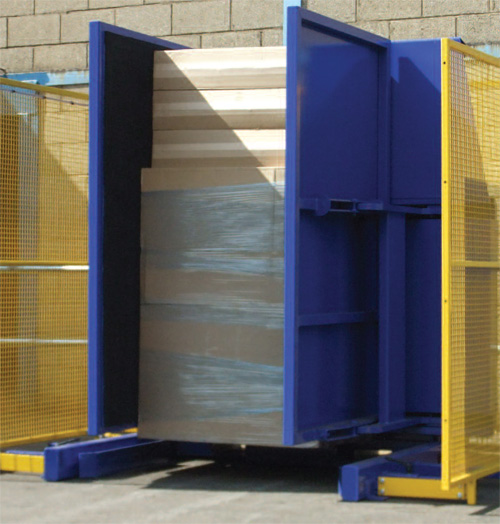
This solution might sound straightforward, but understanding its full impact is key to making a smart investment. An automated pallet exchanger is more than just a piece of machinery; it's a strategic tool that can unlock new levels of efficiency and safety in your operation. To truly appreciate its value, we need to break down the specific challenges it solves and the features that matter most. Let's dive into the details of how this works and what you should look for.
Why is managing both US and EU pallet standards a major headache for Canadian businesses?
The problem starts with a simple difference in size, but it quickly spirals into a series of costly operational challenges. If your Canadian facility is a hub for goods moving between the US and Europe, you're caught in the middle. You receive products on one type of pallet and need to ship them out on another. Ignoring this can lead to rejected shipments, wasted space, and even financial penalties. It’s a constant source of friction in what should be a smooth supply chain.
Managing both US (GMA) and EU (EUR/EPAL) pallet standards is a major challenge for Canadian businesses because the dimensional differences create significant logistical inefficiencies. This incompatibility complicates warehouse storage, truck and container loading, and requires costly, labor-intensive manual processes to transfer goods, which in turn increases the risk of product damage and workplace injuries.
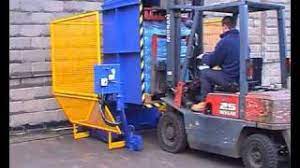
I've walked through many facilities and seen the manual re-palletizing stations. They are often crowded, slow, and a hotspot for safety incidents. The real cost isn't just the labor; it's the ripple effect it has on your entire operation. Let's look closer at why this seemingly small issue creates such a big headache.
The Core of the Problem: Size and Design Differences
The fundamental issue lies in the different design philosophies behind North American and European pallets. The US standard, often called the GMA pallet, is designed for the domestic supply chain. The EU standard, or EUR/EPAL pallet, is designed for the European Pool Pallet system. Their dimensions are not interchangeable.
Here’s a quick breakdown of the most common standard sizes:
| Feature | Standard US Pallet (GMA) | Standard EU Pallet (EUR/EPAL 1) |
|---|---|---|
| Dimensions (Width x Length) | 40" x 48" (1016mm x 1219mm) | 800mm x 1200mm (31.5" x 47.24") |
| Design | Typically stringer design | Block design |
| Forklift Access | 2-way or limited 4-way | True 4-way access |
| Primary Market | North America | Europe and much of Asia |
As you can see, they are fundamentally different. A load configured for a GMA pallet will not fit neatly onto a EUR pallet, and vice-versa. This leads to overhang or underhang, creating unstable loads that are prone to shifting and damage during transit. The block design of the EUR pallet also allows for easier handling from any side, a feature that many European logistics systems are built around.
The Ripple Effect of Incompatibility
This size difference creates a chain reaction of problems. First, it kills space efficiency. Trucks and sea containers are designed to be packed tightly. When you use the wrong pallet, you create dead space, meaning you ship air instead of product. This directly increases your per-unit shipping cost. Second, it forces manual intervention. Someone has to physically un-stack a pallet of goods and re-stack it onto the correct pallet type. This is slow, expensive, and a major source of product damage from mishandling. I remember a client in the food and beverage industry who was losing thousands of dollars a month just from dropped cases during manual transfers. Finally, it creates compliance risks. Shipping to a major retailer in Europe on a non-standard pallet can lead to fines or the entire shipment being rejected at the receiving dock, causing massive delays and damaging your reputation as a reliable supplier.
How does an automated pallet exchange solve the US-EU spec challenge?
Imagine your workflow. A truck arrives from the US, and your team unloads pallets of goods. Instead of sending those pallets to a corner for manual rework, a forklift operator takes the entire loaded pallet and places it into a machine. A few moments later, the same load emerges, perfectly positioned on a brand-new, EU-spec pallet, ready for storage or immediate cross-docking to an outbound container. This is the core function of a pallet exchanger.
An automated pallet exchange solves the US-EU spec challenge by mechanizing the entire transfer process. The machine securely clamps the product load, then either pushes or inverts it onto the target pallet type. This eliminates the need for manual unstacking and restacking, drastically reducing labor time, minimizing product damage, and ensuring a seamless, rapid transition between different pallet standards.
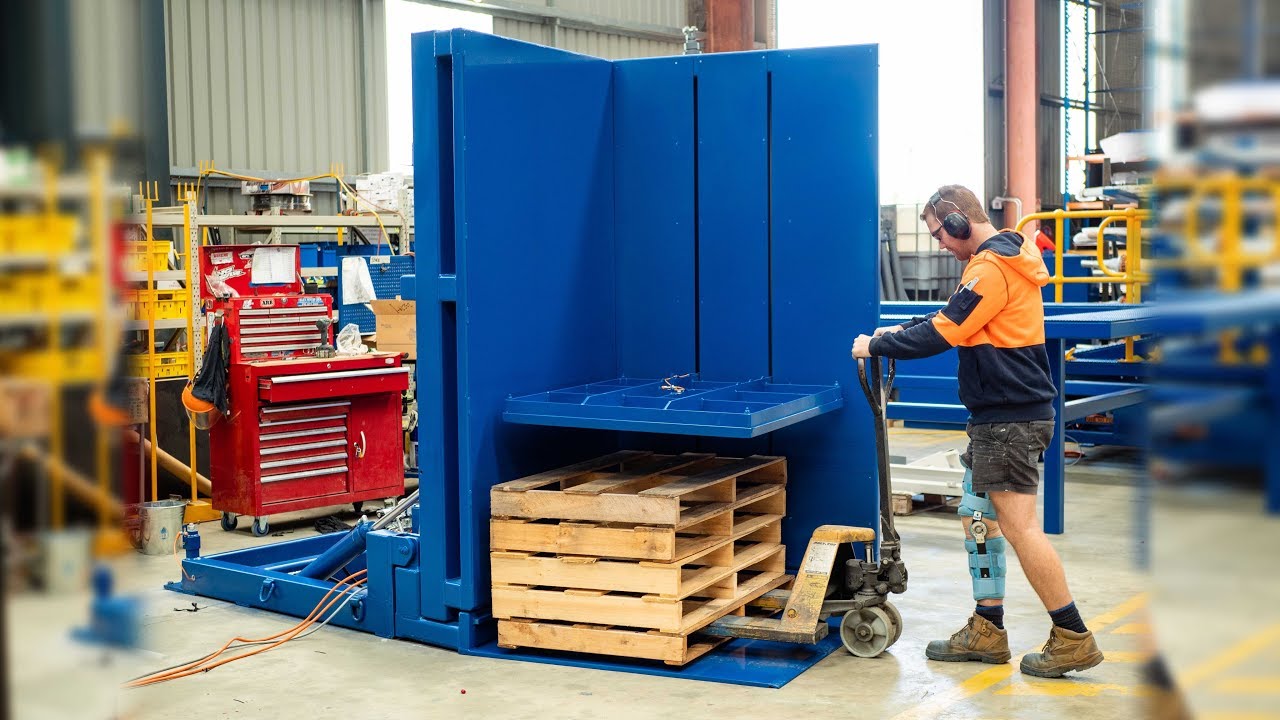
It sounds simple because it is designed to be. The complexity is engineered into the machine so that the process for your operator is as easy as possible. But how it accomplishes this transfer is important, as different methods are suited for different types of products. Let's get into the mechanics.
The Mechanics of the Transfer
Automated pallet exchangers, also known as pallet inverters or pallet changers, use a few primary methods to transfer a load. The choice of method often depends on the stability and durability of your product.
-
Pusher-Type Exchangers: This is a very common and gentle method. The forklift places the source pallet (e.g., a US pallet) into the machine. Sidewalls close in to support the load. Then, a pusher plate gently moves the entire load horizontally from the source pallet onto the new target pallet (e.g., an EU pallet) waiting on the other side. This is ideal for layered goods, boxes, or products that shouldn't be tilted or turned upside down.
-
Inverter-Type Exchangers: This method is faster and great for very stable, robust loads. The machine clamps the load and pallet together from the top and bottom. It then rotates the entire unit 180 degrees. The original pallet is now on top and can be removed. A new pallet is placed on the load, and the machine clamps and rotates it back 180 degrees. This is perfect for things like bags of cement, canned goods, or solid materials that aren't sensitive to orientation.
Beyond a Simple Switch: The Real Benefits
The immediate benefit is solving the pallet incompatibility problem. But the true value comes from the secondary effects. First, you see a massive increase in throughput. A manual team might take 15-20 minutes to transfer a load. An automated exchanger can do it in 60-90 seconds. This transforms a major bottleneck into a smooth, continuous flow. Second, worker safety improves dramatically. You are removing one of the most physically strenuous tasks in the warehouse—repeatedly lifting and moving heavy items. This reduces the risk of back injuries, strains, and other musculoskeletal disorders, which are a huge source of workers' compensation claims. Finally, product integrity is protected. The machine handles the entire load as a single, stable unit. This prevents the damage that is almost inevitable when individual boxes or items are handled manually.
What are the key features to look for in a pallet exchanger for this specific task?
When you start looking at pallet exchangers, you'll see a lot of different models and options. It's not a one-size-fits-all solution. For a Canadian company bridging the US and EU markets, you need a machine that is both robust and flexible. You're likely dealing with a wide variety of goods, and the equipment needs to handle all of it safely and efficiently. The goal is to invest in a machine that becomes a reliable part of your daily operations for years to come.
When selecting a pallet exchanger for US-EU standard switching, focus on three key areas: performance, safety, and integration. Look for a high load capacity (at least 1500 kg), a fast cycle time (under 90 seconds), comprehensive safety features like light curtains and pressure sensors, and the ability to integrate with your existing conveyor systems and Warehouse Management System (WMS).
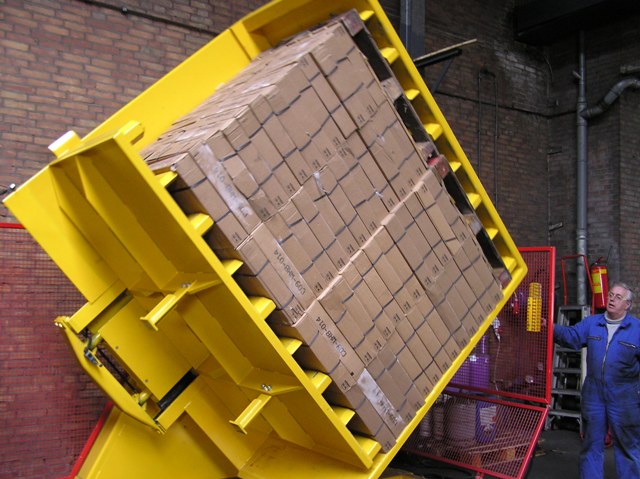
I always advise clients to think about their toughest load, not their average one. The machine must be able to handle your heaviest, tallest, and most awkward pallet without issue. Let’s break down the essential features you should put on your checklist.
Core Performance and Durability
This is about the machine's raw capability. Don't underestimate the demands of an industrial environment.
- Load Capacity: Look for a machine rated for at least 1500 kg (approx. 3300 lbs) to be safe. Even if your average pallet is lighter, you need the headroom for dense, heavy products. For industries like steel or building materials, you might need even higher capacities.
- Cycle Time: This determines your throughput. A good target is a complete cycle in 60 to 90 seconds. This ensures the pallet exchanger doesn't become the new bottleneck in your process.
- Construction: The frame should be made of heavy-gauge, welded steel. Look at the quality of the welds and the components used. Hydraulic systems should be robust, and electrical components should be from reputable brands. This is a long-term investment, and it needs to be built to last.
Safety and Control Systems
This is non-negotiable. An automated system must be inherently safe for the operators and anyone working nearby. Modern machines should come with a multi-layered safety system.
| Safety Feature | Purpose | Why It's Crucial |
|---|---|---|
| Safety Light Curtains | Creates an invisible barrier. If broken, the machine stops instantly. | Protects operators from entering the machine's operational space while it's in motion. |
| Physical Guarding/Fencing | A physical barrier that prevents accidental access to moving parts. | The first line of defense, essential for compliance with workplace safety standards. |
| Pressure Sensors | Monitors the clamping force applied to the load. | Prevents crushing the product by applying just enough force to secure it, but no more. |
| PLC Controls | A dedicated computer that runs the machine's logic. | Allows for precise, repeatable operations and easy troubleshooting. Look for user-friendly HMI (Human-Machine Interface) screens. |
| Emergency Stops | Clearly marked buttons that immediately cut power to the machine. | Essential for immediate shutdown in any unforeseen situation. |
Integration and Customization
The machine shouldn't be an island. It needs to work seamlessly with the rest of your warehouse. Think about how the pallets will get to and from the exchanger. Will it be by forklift, or do you want to connect it to a conveyor line? A good supplier can offer options to integrate the pallet exchanger directly into an automated line, receiving pallets from one conveyor and dispensing them onto another. Furthermore, consider customization. Can the machine's clamping range be adjusted to handle your tallest and shortest loads? Can the control system be programmed to connect with your WMS, automatically logging each pallet transfer? This level of integration is what separates a basic machine from a true automation solution.
How can integrating an automated pallet exchanger boost overall warehouse efficiency and safety in Canada?
When we talk about automation, the conversation often centers on replacing a single manual task. But the true power of a tool like a pallet exchanger is its ability to create a positive domino effect across your entire operation. By fixing a single, crucial bottleneck—the transfer of goods between pallet types—you unlock improvements in speed, space utilization, and, most importantly, the well-being of your team.
Integrating an automated pallet exchanger boosts overall warehouse efficiency by transforming a slow, manual bottleneck into a high-speed, automated process, increasing throughput by over 90%. Simultaneously, it drastically improves safety by eliminating the dangerous manual lifting and restacking tasks responsible for a high percentage of warehouse back injuries and strains.
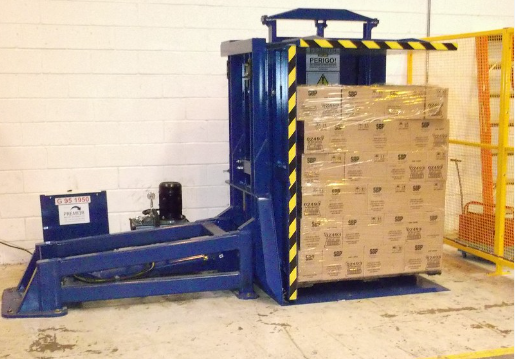
I've seen this happen firsthand. A client in the consumer goods sector was constantly struggling with shipping deadlines for their European exports. Their re-palletizing team couldn't keep up. After installing a pallet exchanger, their dock area became noticeably calmer and more organized. Trucks were being loaded faster, and the stress on the shipping manager was visibly reduced. Let's quantify these benefits.
A Leap in Productivity and Throughput
The most direct impact is on speed. Let's do some simple math. A two-person team might take 15 minutes to manually transfer a full pallet. In an 8-hour shift, with breaks, they might get through 25-30 pallets. An automated pallet exchanger with a 90-second cycle time can process 40 pallets in a single hour. That’s a productivity increase of over 1000%. This isn't just about doing the same work faster; it's about creating new capacity. It means you can handle more volume without adding more labor. It allows you to say "yes" to last-minute orders. For Canadian businesses acting as logistics hubs, this speed and flexibility are a significant competitive advantage. It allows you to offer faster cross-docking services, turning inventory quicker and reducing the need for costly storage space.
Building a Safer Work Environment
The ergonomic benefits cannot be overstated. Manual pallet handling is a leading cause of musculoskeletal injuries (MSIs) in logistics. These injuries are costly, not just in terms of medical bills and insurance premiums, but also in lost productivity and employee morale. By automating this task, you are designing the risk out of the process. You are reassigning your valuable employees from physically punishing labor to more skilled roles, like operating machinery, quality control, or managing inventory systems. This leads to a more engaged and healthier workforce. A safer workplace is a more productive workplace. It reduces absenteeism and employee turnover, saving you the significant costs associated with hiring and training new staff for physically demanding jobs. It sends a clear message to your team that you value their well-being.
What's My Take on the Future of Automated Pallet Handling for Cross-Border Logistics?
When I started my career as an engineer on the factory floor, packaging and logistics were often an afterthought. All the focus was on the big, primary production machines. The end of the line was just a cost center. But my journey, from engineer to factory owner, taught me a powerful lesson: the end of the line is where your product meets the customer, and inefficiencies there can undermine all the hard work that came before.
My take is that automated pallet handling is no longer a luxury but a foundational element of a modern, resilient supply chain. It's evolving from a simple mechanical solution into an intelligent, data-generating node that is essential for any Canadian company serious about competing in the global US and EU markets. It’s about more than just switching pallets; it’s about building a faster, safer, and smarter logistics operation.
I believe we're moving past just solving the physical problem. The future is about integration and data. Here’s where I see this technology going and why it’s so important for businesses navigating complex cross-border trade.
From a Machine to a Data-Driven Asset
The next generation of pallet exchangers won't just move goods; they will provide crucial data. Imagine a pallet exchanger that is fully integrated with your MES or WMS. When it transfers a load from a US to a EU pallet, it doesn't just perform a mechanical action. It scans the barcode on the load, logs the transfer in the system, confirms the new pallet ID, and even weighs the load to verify the manifest. This single action becomes a critical data point for inventory accuracy, traceability, and quality control. For a forward-thinking leader like Javier Morales, who wants to deploy big data analytics, these machines are no longer "dumb iron." They become sensors on the factory floor, feeding real-time information into the digital ecosystem he is building. This data can be used to optimize warehouse flow, predict maintenance needs, and provide unparalleled visibility into the supply chain.
My Experience with a Skeptical Client
I remember a client in the specialty metals industry. They had invested millions in cutting-edge furnaces and rolling mills. When I suggested an automated pallet wrapping and exchange line, they were skeptical. "Vincent," the owner told me, "my business is making steel, not wrapping it. That's just a cost." I convinced them to try it, focusing on the potential to reduce shipping damage. Six months later, he called me. The reduction in damage claims was significant, as expected. But the surprising benefit was at his loading dock. The automated line had eliminated a major bottleneck. They were loading trucks 30% faster, which meant they could increase the number of shipments per day. The "small" problem at the end of the line was holding back his entire plant's output. This taught me that optimizing the final 100 feet of the journey is just as important as optimizing the first mile of production.
The Future is Integrated and Sustainable
For any Canadian business trading with the US and Europe, the pressures are mounting: costs, compliance, and sustainability. Automated pallet handling addresses all three. It cuts labor costs and the indirect costs of injuries. It ensures compliance with the pallet standards of your trading partners. And it contributes to sustainability. How? By reducing product damage, you reduce waste. By creating denser, more stable loads, you can optimize truck and container space, which reduces fuel consumption per unit shipped. This isn't just about a machine; it's a strategic investment in a more efficient, safer, and greener supply chain. It’s a key piece of the puzzle for building a business that can thrive in the demanding world of international trade.
Conclusion
Automated pallet exchange is a powerful, direct solution for Canadian firms managing US and EU pallet standards, boosting both efficiency and safety while future-proofing your logistics for global trade.



